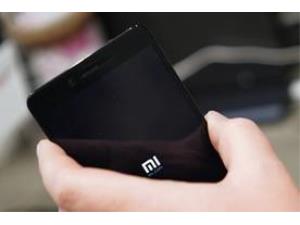



Date:14/06/21
 While Xiaomi had officially unveiled its HyperCharge technology for its future flagship smartphones that offer 200W wired fast charging and 120W wireless fast charging a couple of weeks ago. The company answered a few questions related to this technology earlier today (11th June 2021).
While Xiaomi had officially unveiled its HyperCharge technology for its future flagship smartphones that offer 200W wired fast charging and 120W wireless fast charging a couple of weeks ago. The company answered a few questions related to this technology earlier today (11th June 2021).
To answer questions regarding its technology, the Chinese tech giant brought in some of its engineers. Notably, these engineers added that we might soon see a smartphone launching with no USB charging port as early as next year. In other words, some smartphone brands might launch a device that solely relies on wireless charging. An example of such a smartphone is the Vivo Apex 2020, which offered 60W wireless fast charging as its sole charging solution.
The engineers further added that the only reason why wired charging is still the primary method of charging a smartphone is due to wireless charging technology still not being perfected, with its infrastructure in public places also being scarce at the moment. The wired charging solution is also a lot more mature in comparison to the wireless counterpart. People have even questioned the safety of this technology, especially as charging rates have increased in recent times.
But in the near future with advancement in this technology, we can expect to see devices that arrive with improved wireless charging technology. Furthermore, with the Chinese government stepping in to regulate the wireless charging technology, we can expect the third party charging accessory makers to also improve the quality of their product offerings, making it more common in the market as well.
Xiaomi engineers believe phones without USB ports could hit the market in 2022
 While Xiaomi had officially unveiled its HyperCharge technology for its future flagship smartphones that offer 200W wired fast charging and 120W wireless fast charging a couple of weeks ago. The company answered a few questions related to this technology earlier today (11th June 2021).
While Xiaomi had officially unveiled its HyperCharge technology for its future flagship smartphones that offer 200W wired fast charging and 120W wireless fast charging a couple of weeks ago. The company answered a few questions related to this technology earlier today (11th June 2021).To answer questions regarding its technology, the Chinese tech giant brought in some of its engineers. Notably, these engineers added that we might soon see a smartphone launching with no USB charging port as early as next year. In other words, some smartphone brands might launch a device that solely relies on wireless charging. An example of such a smartphone is the Vivo Apex 2020, which offered 60W wireless fast charging as its sole charging solution.
The engineers further added that the only reason why wired charging is still the primary method of charging a smartphone is due to wireless charging technology still not being perfected, with its infrastructure in public places also being scarce at the moment. The wired charging solution is also a lot more mature in comparison to the wireless counterpart. People have even questioned the safety of this technology, especially as charging rates have increased in recent times.
But in the near future with advancement in this technology, we can expect to see devices that arrive with improved wireless charging technology. Furthermore, with the Chinese government stepping in to regulate the wireless charging technology, we can expect the third party charging accessory makers to also improve the quality of their product offerings, making it more common in the market as well.
Views: 648
©ictnews.az. All rights reserved.Similar news
- Azerbaijani project to monitor disease via mobile phones
- Innovative educational system to be improved under presidential decree
- NTRC prolongs license of two TV and radio organizations for 6 years
- Azerbaijan establishes e-registry for medicines
- Azerbaijani museum introduces e-guide
- Nar Mobile opens “Nar Dunyasi” sales and service center in Siyazan city
- International conference on custom electronic services held in Baku
- OIC secretary general to attend COMSTECH meeting in Baku
- Azerbaijan develops earthquake warning system
- New law to regulate transition to digital broadcasting in Azerbaijan
- Azerbaijani State Social Protection Fund introduces electronic digital signature
- Intellectual traffic management system in Baku to be commissioned in December
- Tax Ministry of Azerbaijan started receiving video-addresses
- World Bank recommends Azerbaijan to speed up e-service introduction in real estate
- Azerbaijan to shift to electronic registration of real estate





















